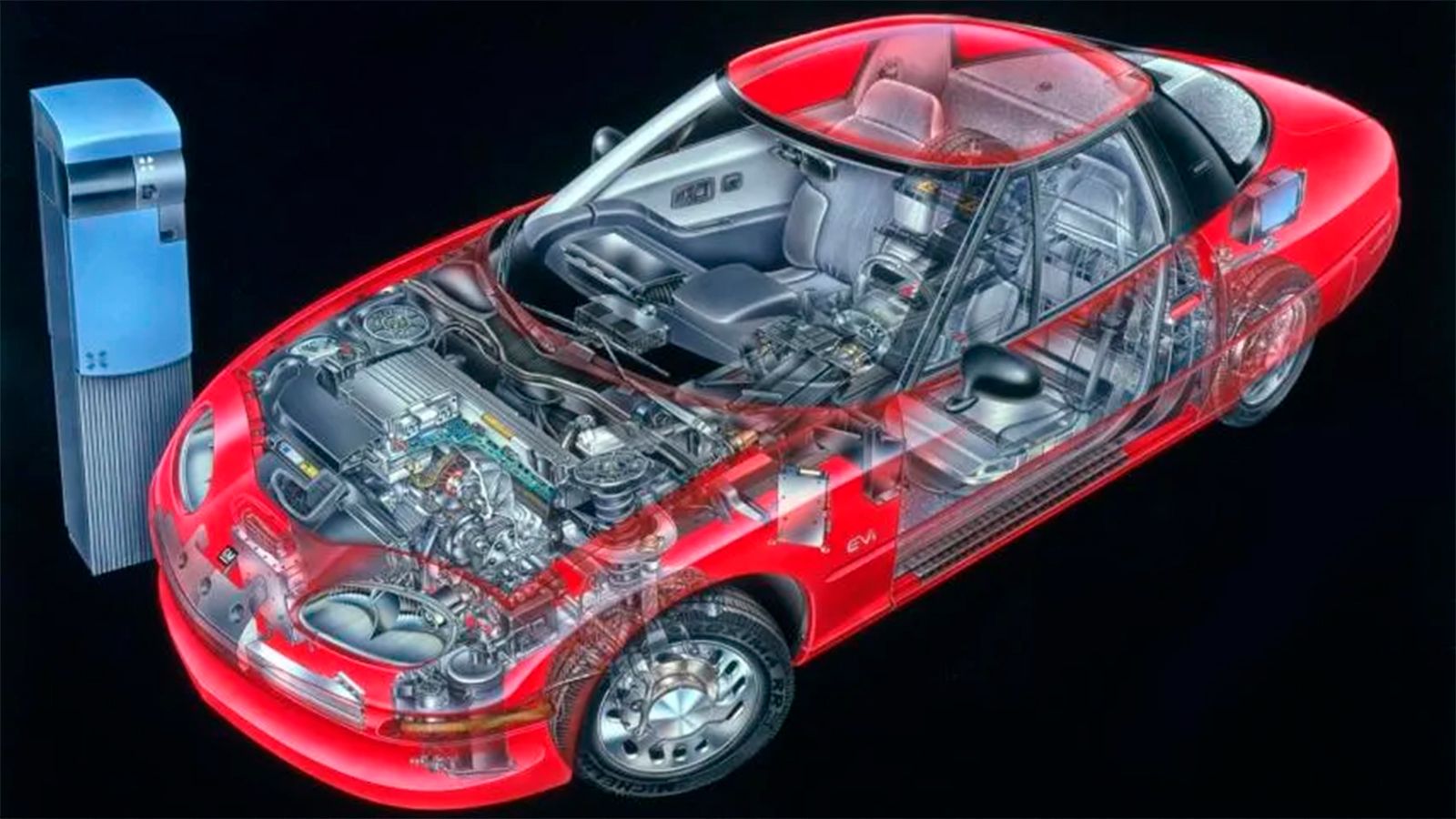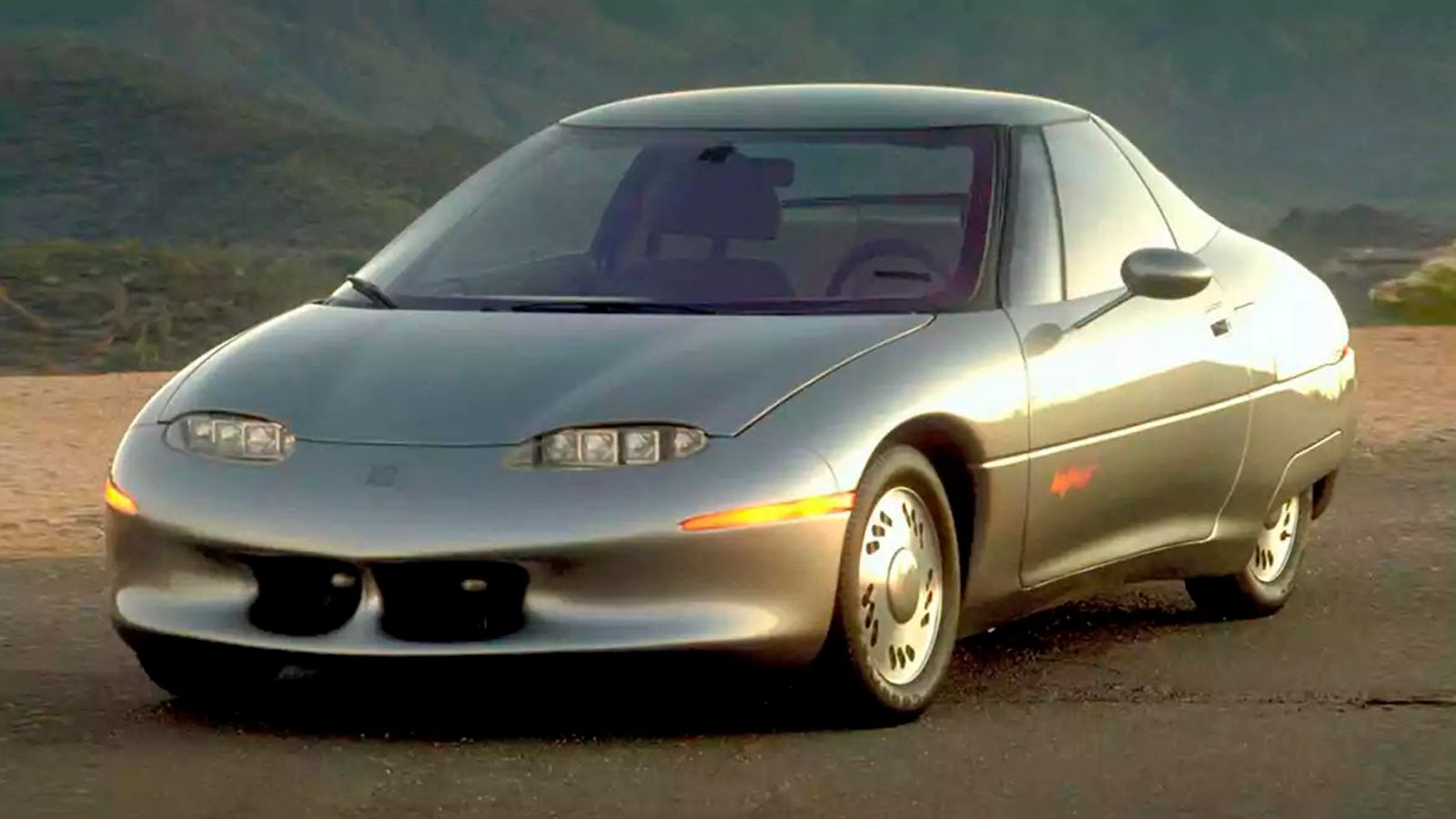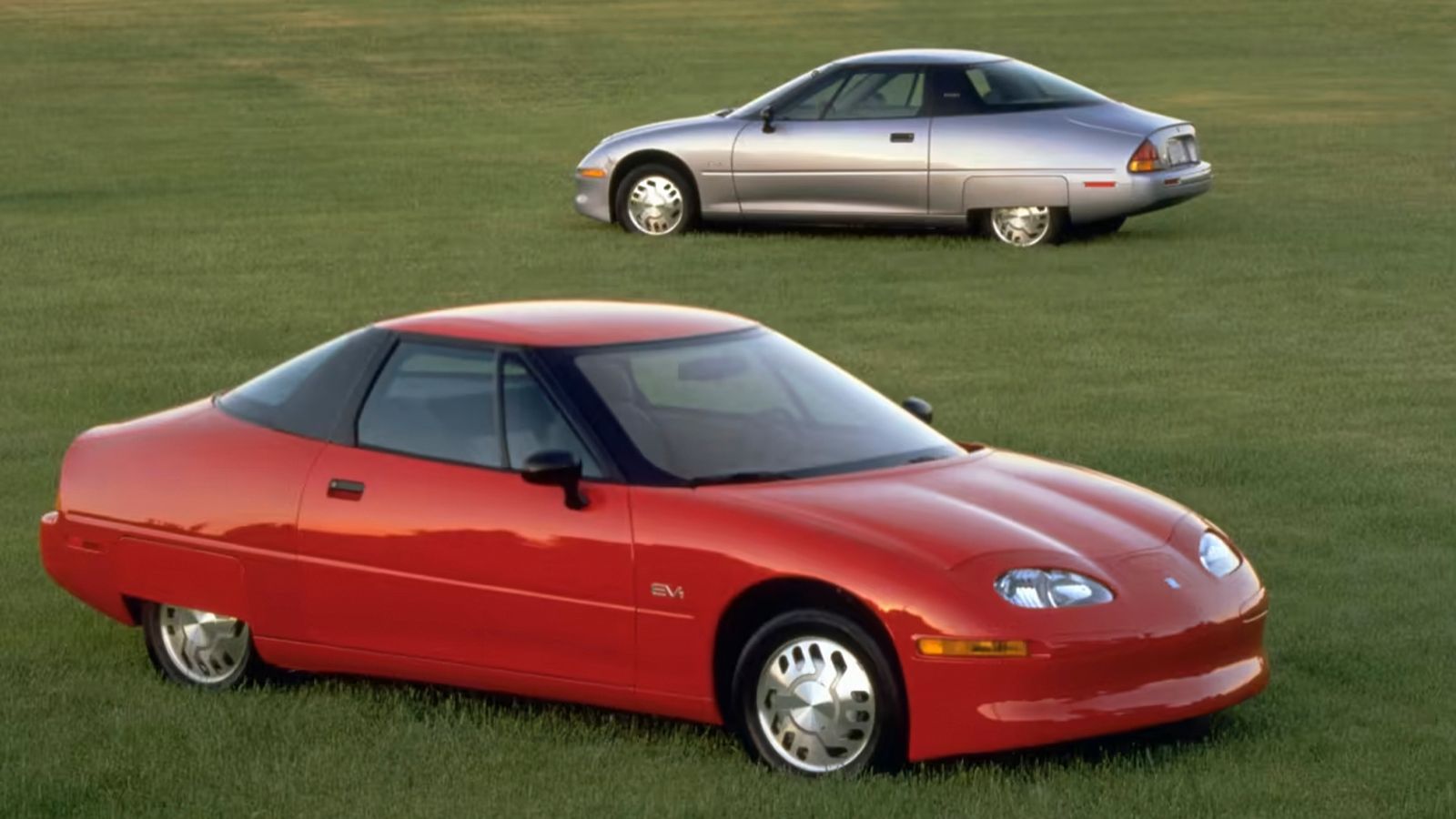
Electric vehicles have come a long way since their inception, evolving from being an ecological statement in the car niche to becoming a feasible personal mobility option. While Tesla’s efforts have been crucial to the current state of electric mobility, other automakers, such as General Motors with its GM EV1, have also played a significant role. Despite its short lifespan, the GM EV1 had a significant impact on today’s electric mobility scene. Introduced in 1996, this “plug-in” car was a two-seater electric vehicle with a futuristic design aimed at reducing pollution and promoting renewable energy sources like electricity. It boasted upgraded technology that allowed for a 140-mile range on a single charge, setting new global standards in vehicle engineering.
Unfortunately, the GM EV1 was discontinued in the late 1990s due to high production costs and lack of consumer interest. However, its accomplishments continue to hold relevance in EV history, as it touched on several key themes. The EV1 spurred research and development efforts in electric vehicles, exploring how technology can improve performance efficiency and how market forces can strengthen sustainability in electric mobility. As new technologies shape our lifestyles, there is much to learn from the influence of the GM EV1 on automotive electric mobility and charging infrastructure standards, despite its premature discontinuation.
The Inception Of The General Motors EV1
In the early 1990s, General Motors, being a dominant car manufacturer, recognized the growing concerns surrounding climate change and made significant progress towards innovation. In 1990, they debuted the Impact, a two-seater sportster at the LA Auto Show. This was the predecessor of the EV1 and marked the initial efforts across the industry to limit harmful emissions and reduce dependence on fossil fuels. Drawing inspiration from legacy models like the SunRaycer, GM’s team leveraged their technical and design expertise to develop a highly influential electric vehicle that would shape the EV industry.
Following the success of the Impact, a group of talented GM engineers and designers embarked on an ambitious adventure with sustainability as their driving force. They aimed to develop an electric vehicle that was ecologically benign, efficient, and ahead of its time. In 1994, GM launched the PrEView program, lending 50 hand-built Impact electric cars to drivers for one to two weeks in exchange for valuable feedback used for further development of the EV1. The original Impact vehicles were eventually destroyed, but their design served as the foundation for the GM EV1. Notably, this was General Motors’ first car branded with their company nameplate instead of a subsidiary marque.
It All Began With The EV1 Car
The concept of electric cars has been around since the 1830s, but General Motors became the first to introduce a consumer-ready electric car in 1996, 14 years before the Nissan Leaf. The GM EV1, as it was officially called, was the result of years of research and development. It featured innovative elements such as regenerative braking and a robust powertrain system for long-lasting performance and extended range capabilities. The launch of the GM EV1 marked a significant milestone for General Motors and propelled the advancement of electric vehicles by delivering an impressive range of up to 140 miles per charge cycle. Its range, efficiency, and performance set new standards and inspired other automakers to invest in electric vehicle research and development. The EV1’s cutting-edge technology and futuristic design also sparked interest among consumers and the industry, providing insights into the potential breakthroughs in electric mobility.
The EV1’s Legacy Paved Way For A Lot Of Technologies
The GM EV1, despite its short existence, left a lasting legacy in the electric vehicle industry. It challenged preconceived notions about electric vehicles and showcased that they could offer more than just eco-friendly transportation. The EV1 demonstrated impressive performance and futuristic design, breaking barriers and revealing the immense potential of electric mobility. By capturing public attention and generating interest, the EV1 played a crucial role in shifting perceptions and driving the wider acceptance and adoption of electric vehicles. Its technological advancements also set a precedent for subsequent electric vehicle models, driving innovation in battery technology, powertrain efficiency, and regenerative braking. The knowledge gained from developing the EV1’s components propelled the EV industry forward, leading to further breakthroughs in electric vehicle performance and range. The influence of the EV1 extended beyond General Motors, inspiring other automakers to invest in EV research and development, fostering competition, and promoting continuous improvement.
The story of the EV1 also offers valuable lessons for the EV industry. Its discontinuation highlighted the importance of cultivating consumer demand, investing in charging infrastructure, and addressing concerns related to cost and range anxiety. These lessons have guided the industry in making electric vehicles more accessible, convenient, and economically viable. Today, we see the impact of these lessons as EVs gain widespread popularity and automakers strive to create a sustainable transportation future. Thus, the legacy of the EV1 serves as an inspiration for a new generation of electric vehicles from established automakers and startups, symbolizing the pioneering spirit, innovation, and dedication that continue to drive the EV industry forward. The EV1’s influence can be observed in the diverse and rapidly expanding range of electric vehicles today, as well as the ongoing efforts to improve charging infrastructure and battery technology in the pursuit of a sustainable transportation future.
Although General Motors is not entirely abandoning internal combustion, their early commitment to environmentally friendly transportation made significant progress with the introduction of the iconic GM EV1 nearly thirty years ago. This initiative propelled the electro-mobility aspect of the automobile industry toward discovering innovative measures for more environmentally friendly vehicles worldwide. Despite its premature termination, the GM EV1 taught valuable lessons that continue to impact the way corporations view green technologies today. As we move towards a more sustainable future, we must acknowledge the trailblazing contributions of vehicles like the GM EV1, which have sparked innovation and propelled the industry forward.




